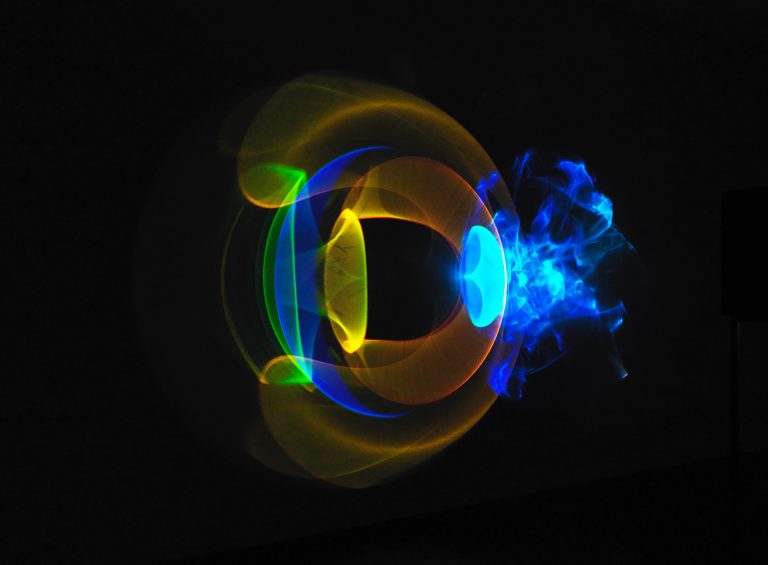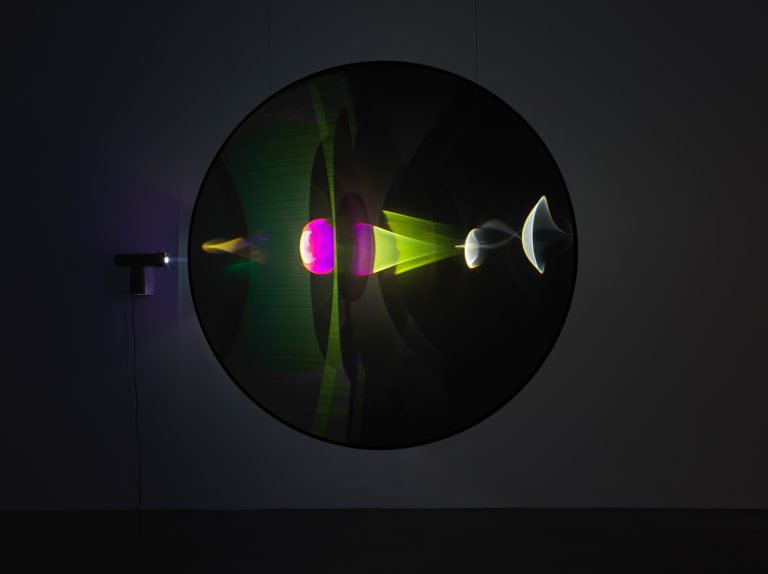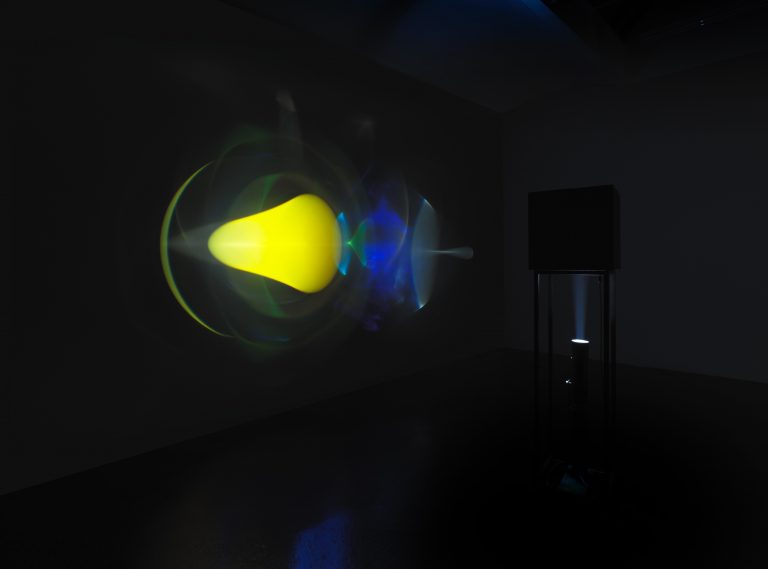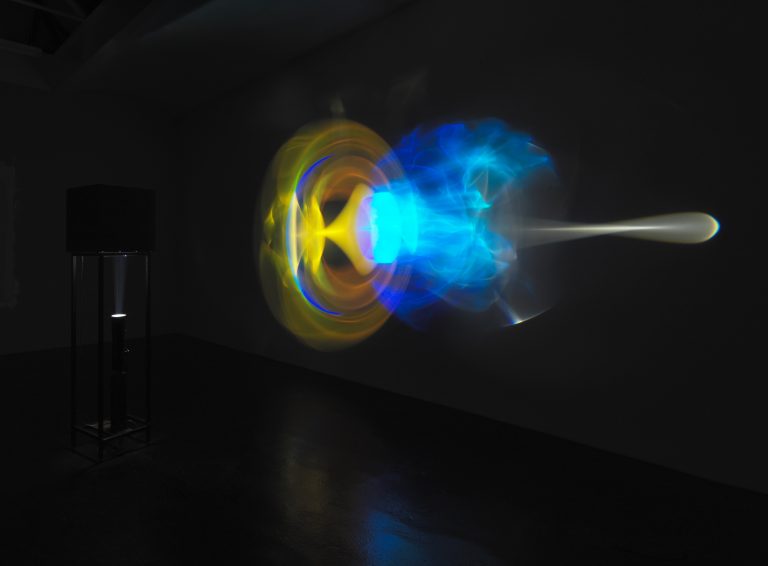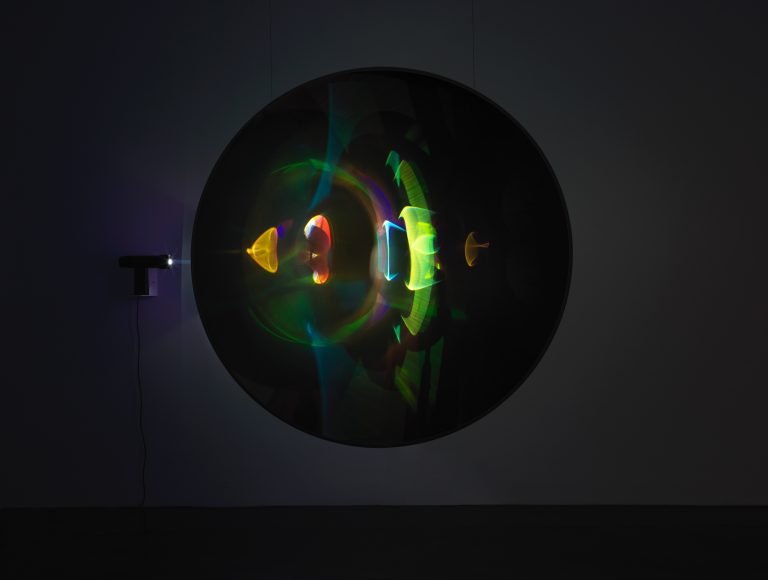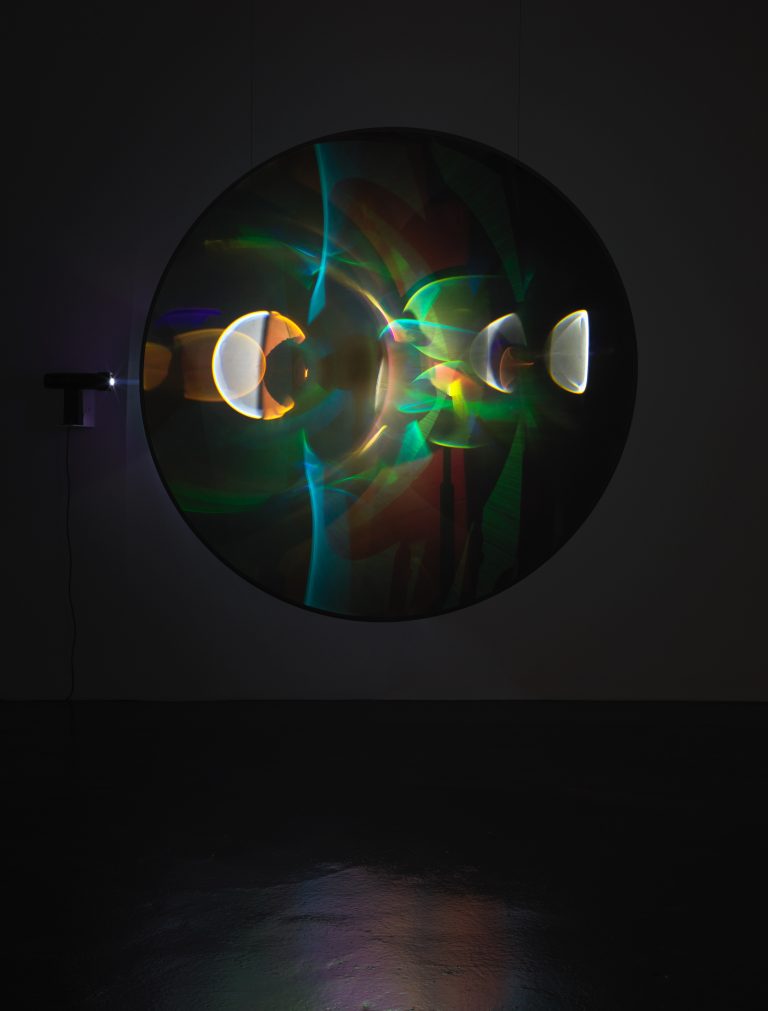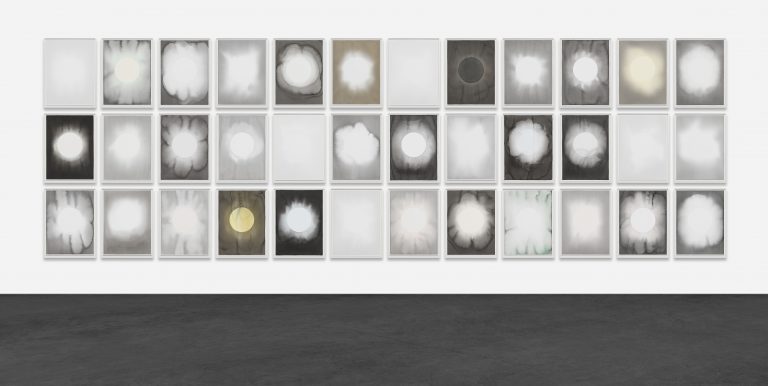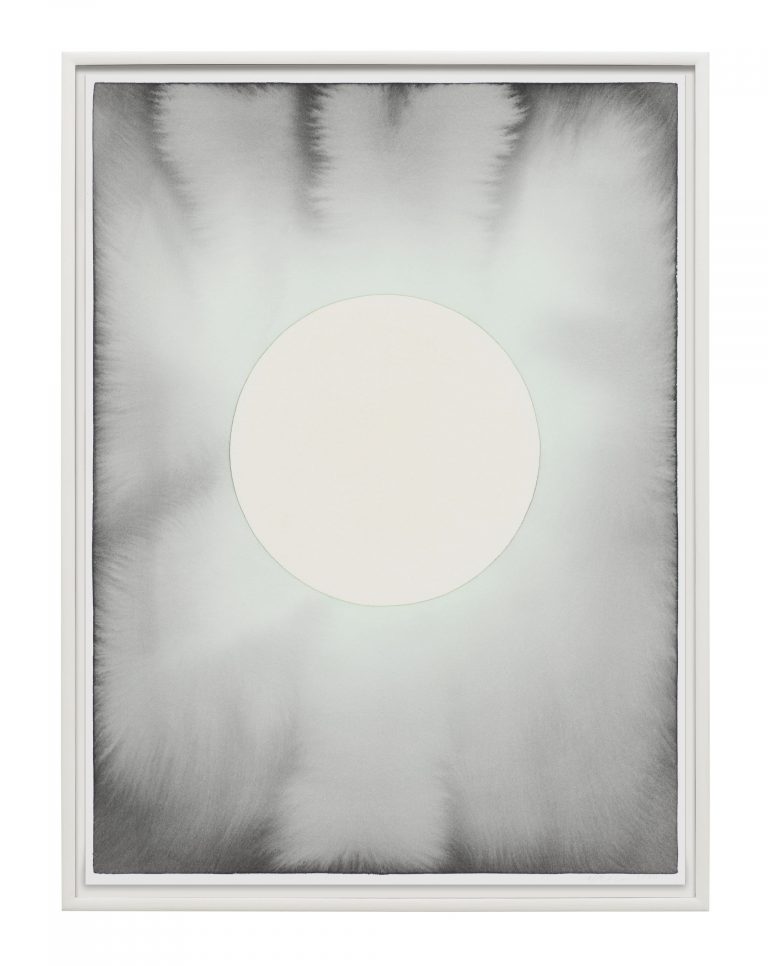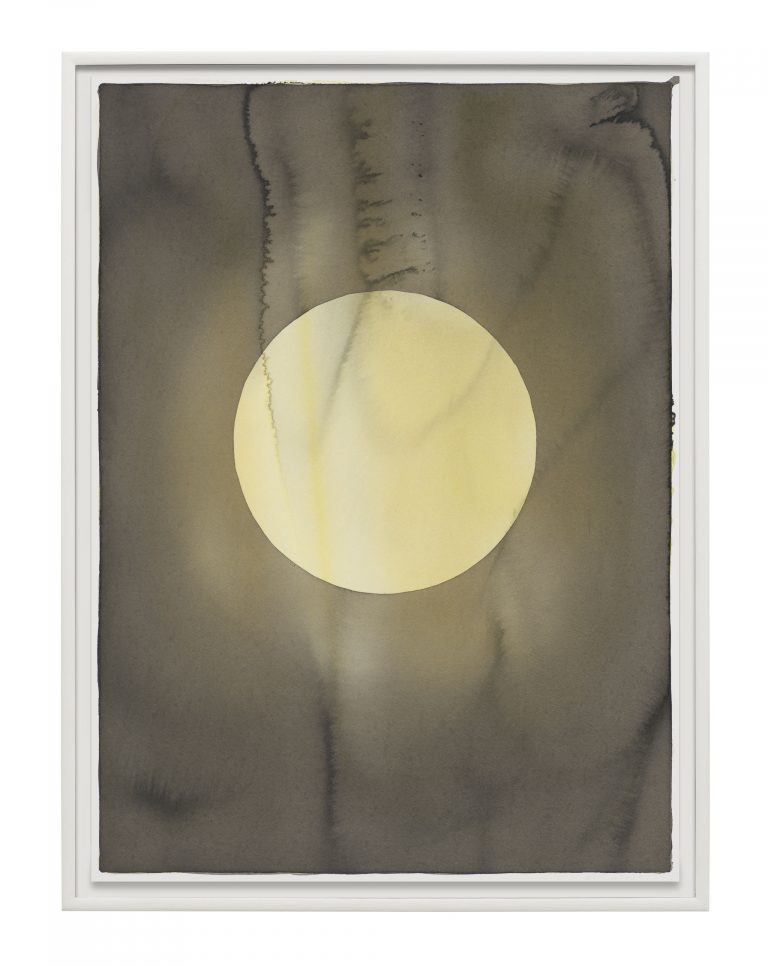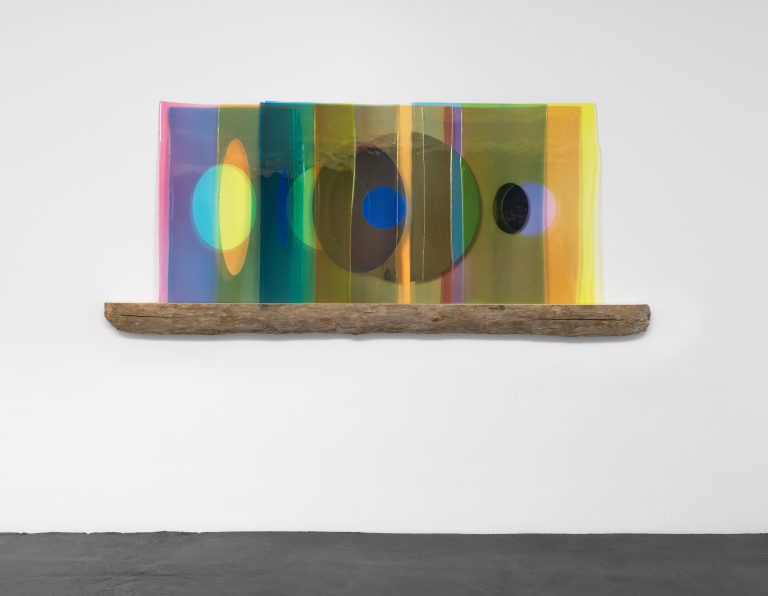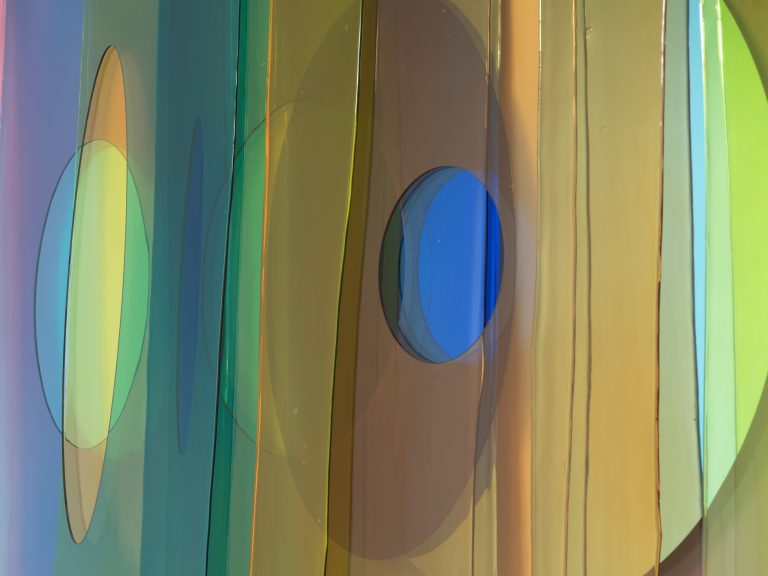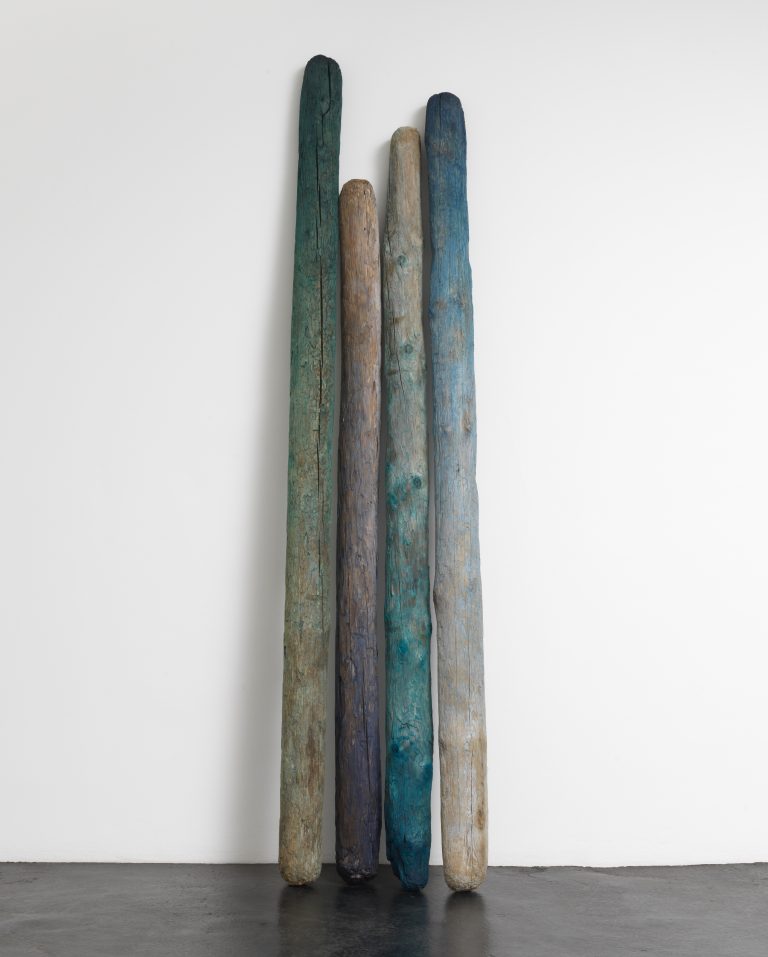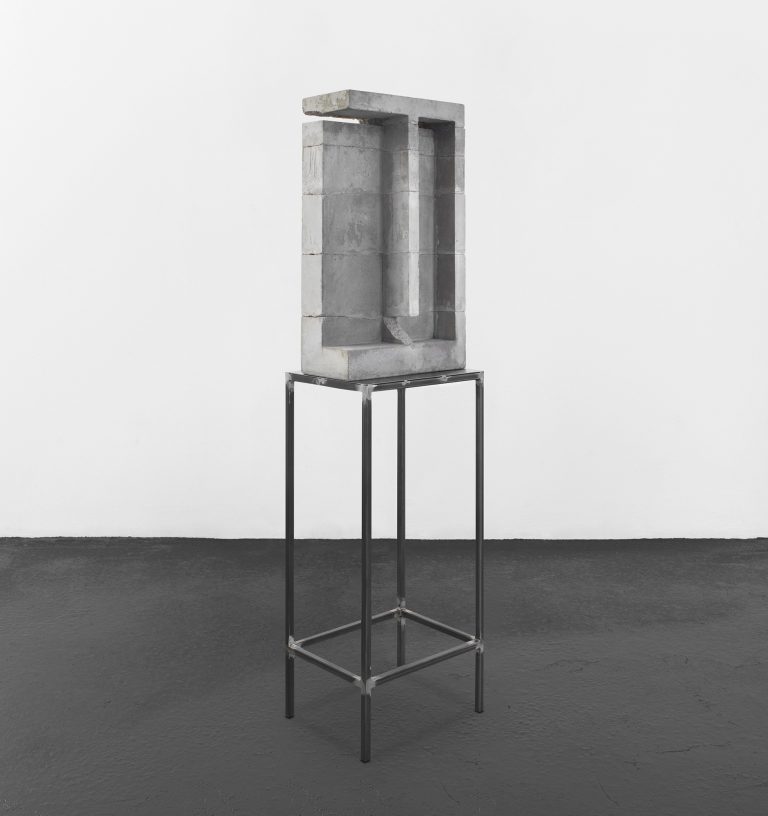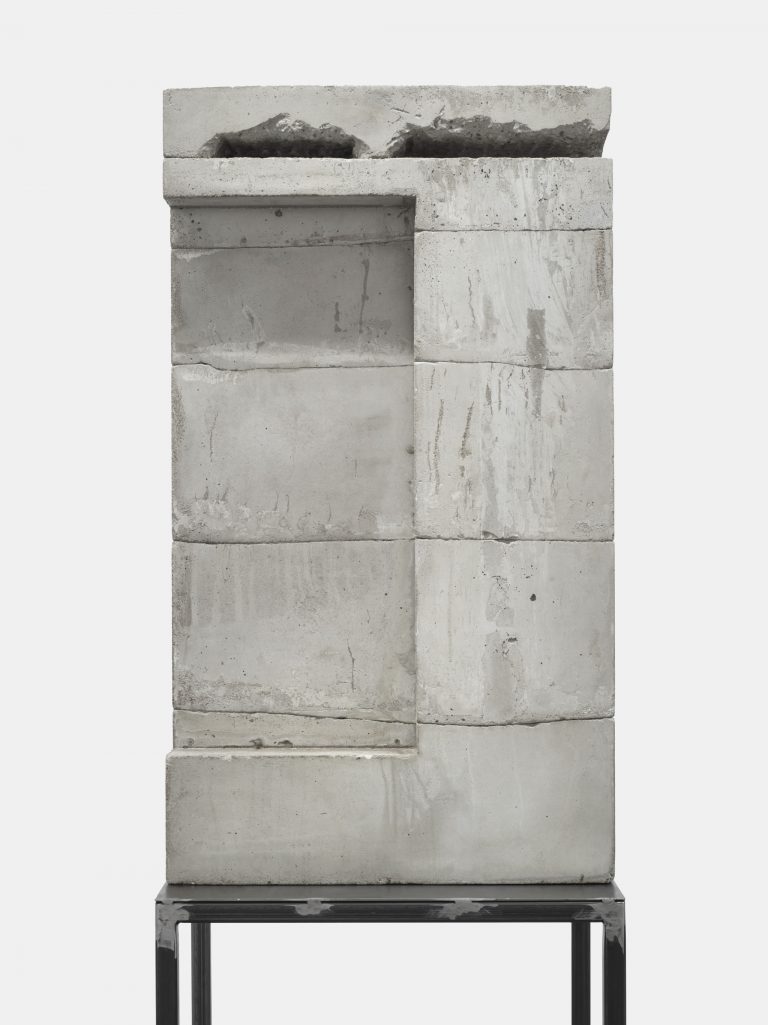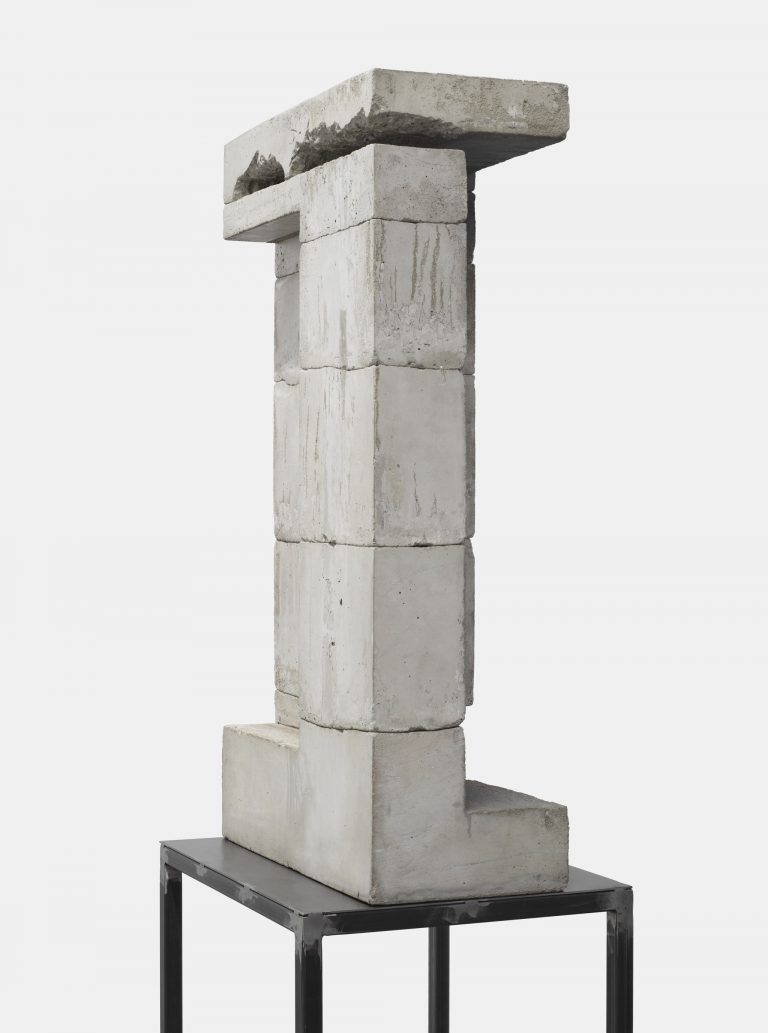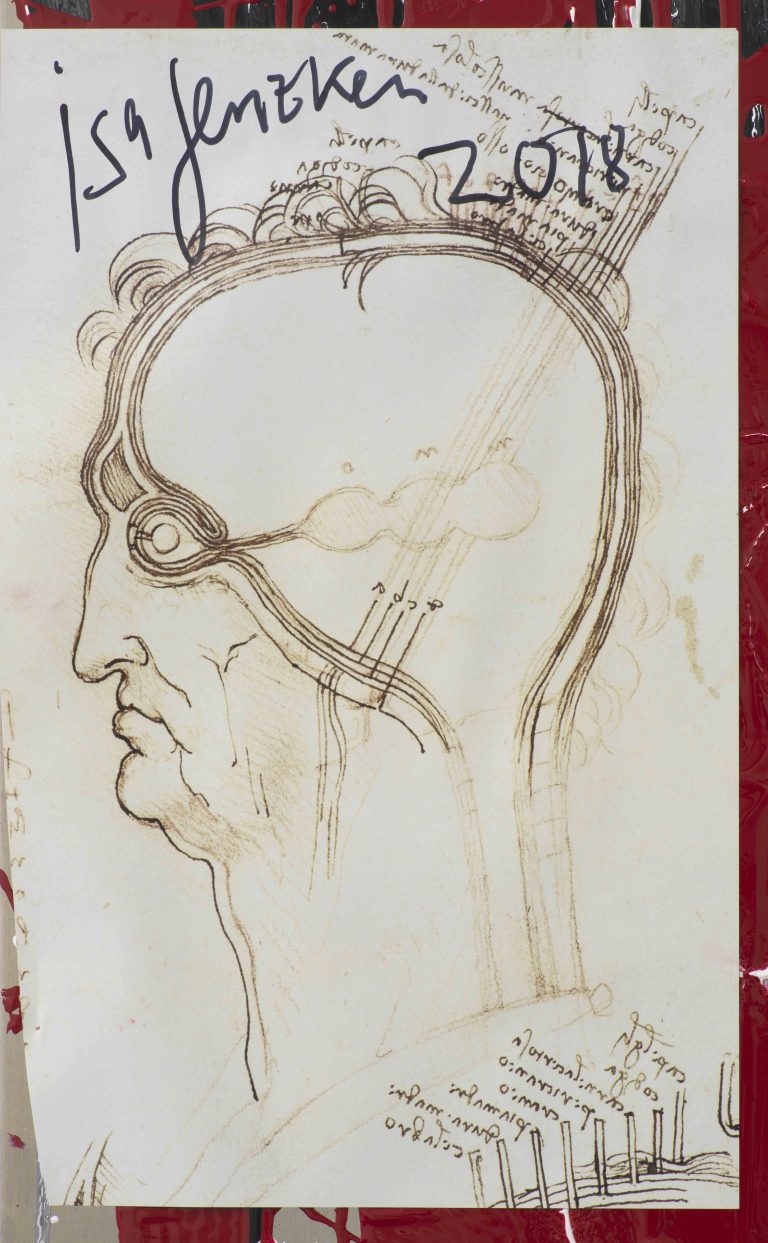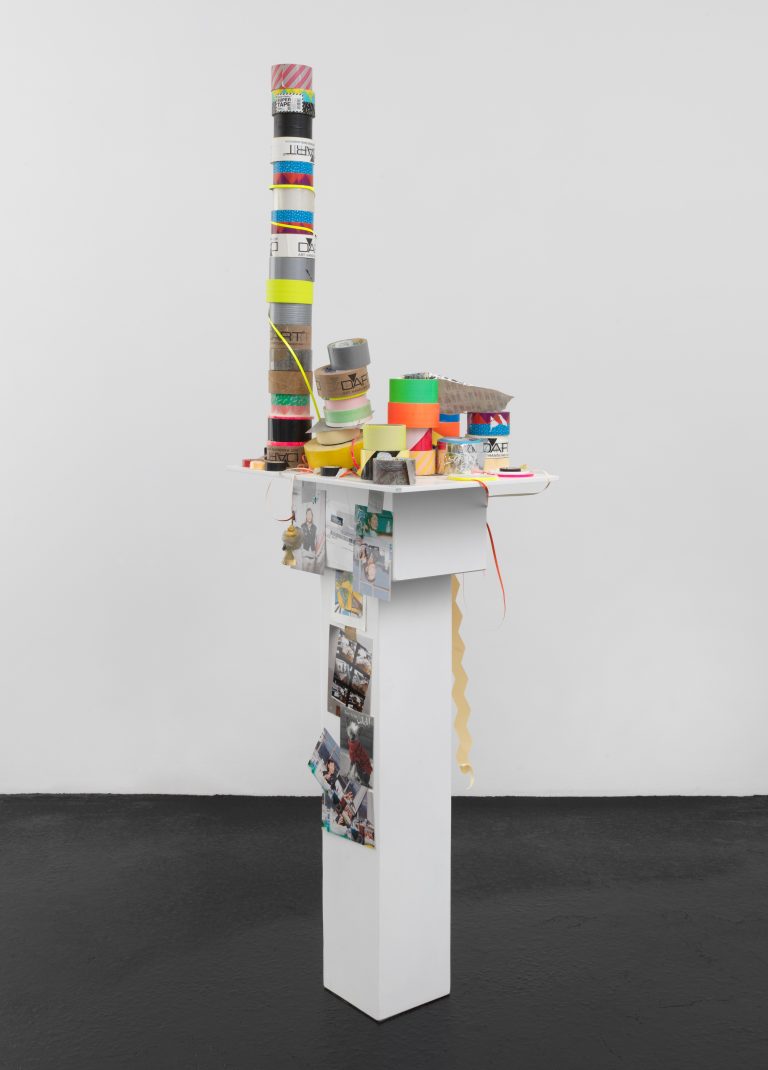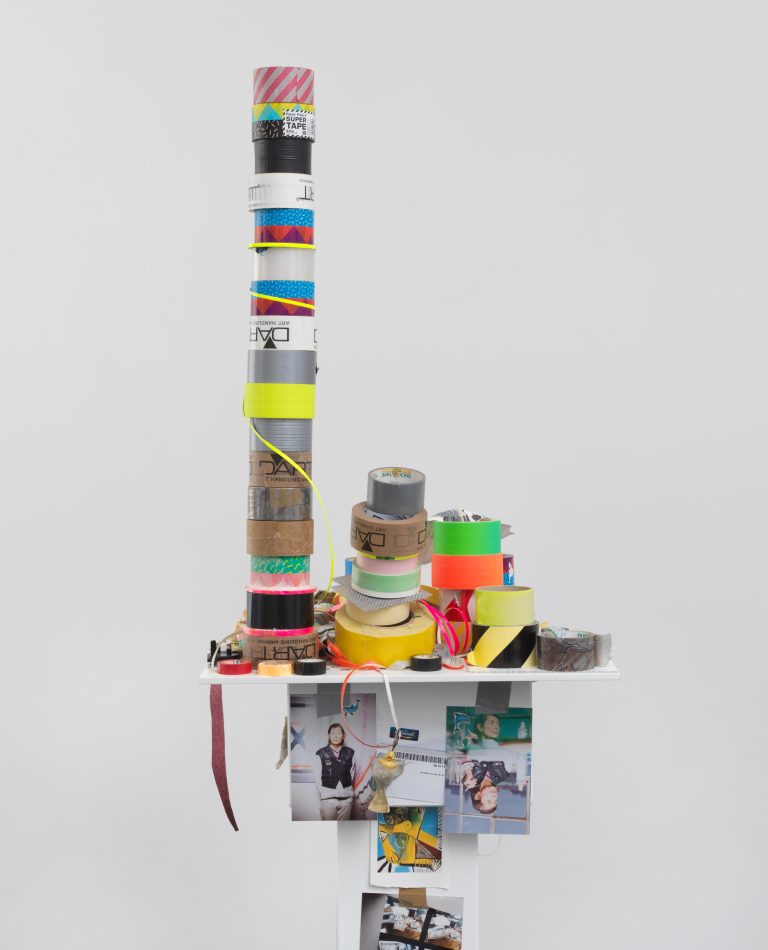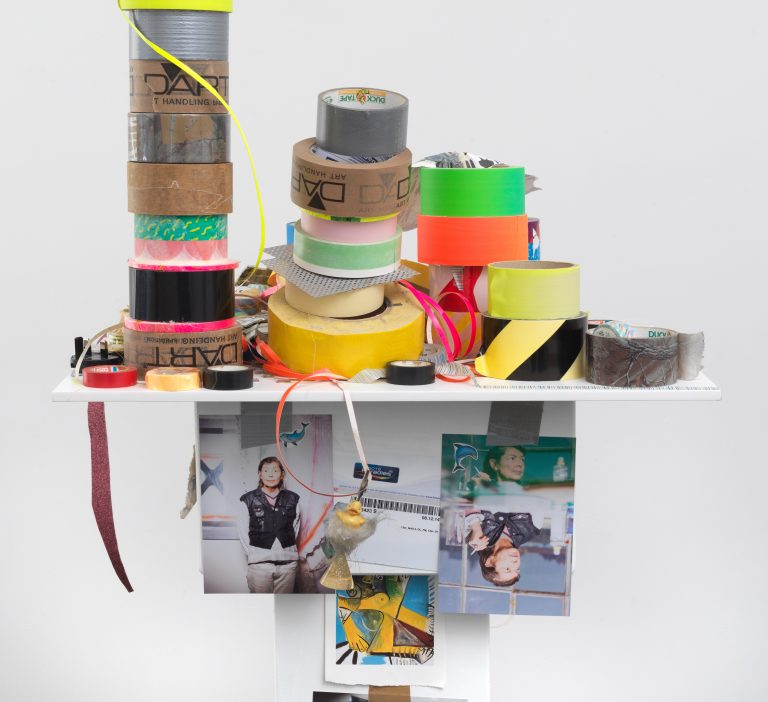12 Sep –
24 Oct 2020
Olafur Eliasson
Near future living light
12 Sep –
24 Oct 2020
Isa Genzken
Olafur Eliasson
Near future living light
“Near future living light evokes the experimental cinema of the early twentieth century: colours and shapes appear, develop, and vanish in a slow continuum. This continuously unfolding display arises through collaboration between a spotlight, a wall, and a black box. The black box holds simple objects from my studio–a glass cylinder, lenses, mirrors, differently coloured filters–as they rotate and move. It is from this treasure trove of concrete materials that these transient and immaterial forms emerge and become present to our senses. The artwork’s silent, slowly shifting atmosphere suggests a view from outer space.”
Olafur Eliasson
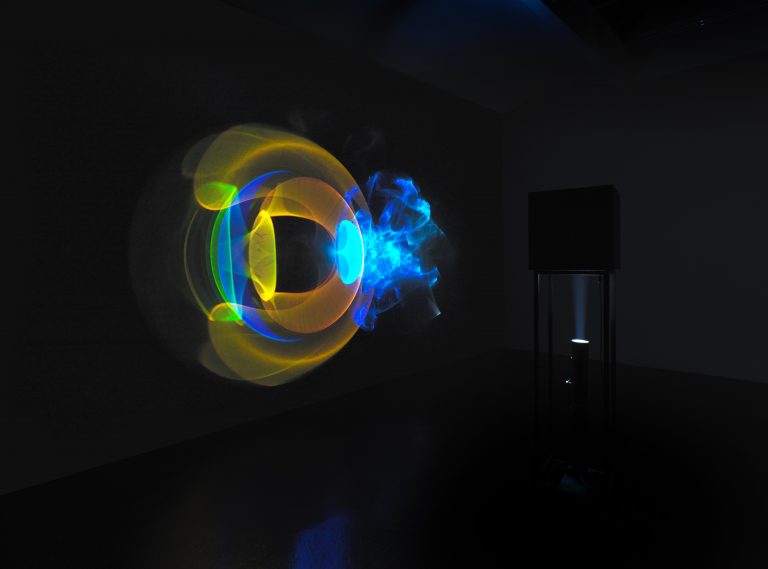
Olafur Eliasson, Interpretive flare display of unthought thoughts, 2020, tripod, LED spotlight, lenses, colour-effect filter glass, concave glass mirror, mirror, aluminium, brass, steel, motors, control unit, approx. 320 x 530 x 300 cm. unique © Studio Olafur Eliasson. Courtesy the artist and neugerriemschneider, Berlin. Photo by Jens Ziehe
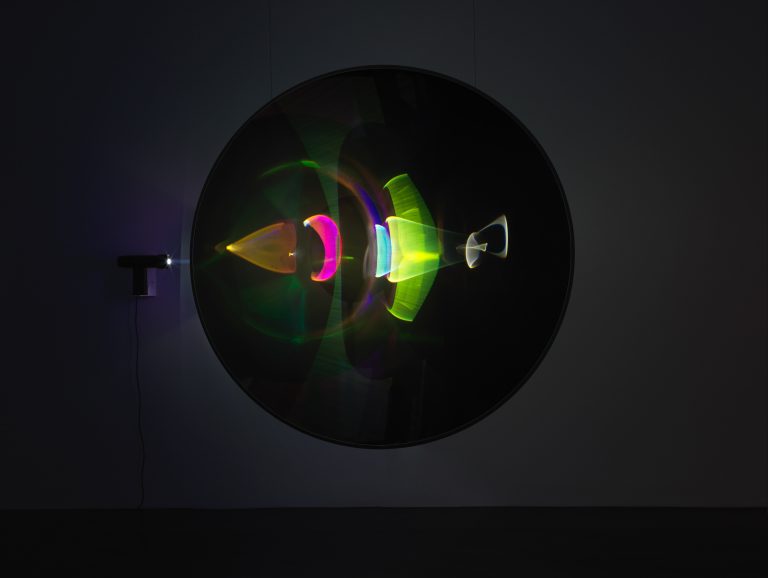
Olafur Eliasson, Your sooner than later, 2020. Projection screen, LED spotlight, lenses, colour-effect filter glass, concave glass mirror, mirror, aluminium, brass, steel, motors, control unit. 270 x 280 x 125 cm. Unique. © Studio Olafur Eliasson. Courtesy the artist and neugerriemschneider, Berlin. Photo by Jens Ziehe
neugerriemschneider is pleased to announce Olafur Eliasson’s eighth solo exhibition with the gallery. Entitled Near future living light, this show continues the artist’s decades-long investigation of perception, illusion and the range of optical phenomena through three new projected light installations, a composition crafted from colored hand-blown glass, a 36-part, largely black-and-white watercolor work, driftwood sculptures and a partially mirrored, wall-mounted crystal glass sphere.
In Interpretive flare display of unthought thoughts, Your sooner than later and New beginning (all 2020), light is projected onto an array of lenses, mirrors and filters attached to motors to create an ever-shifting collection of shapes, colors, lights and shadows that traverses the black box shaped by the gallery’s darkened space. These abstract choreographies build upon early twentieth-century experiments in abstract animation and visual music, creating an immersive environment. Each elliptical shape shifts, pulsates, grows, shrinks, appears and disappears, and Eliasson unsettles notions of two- and three-dimensional objects, lending the flattened compositions a sculptural quality.
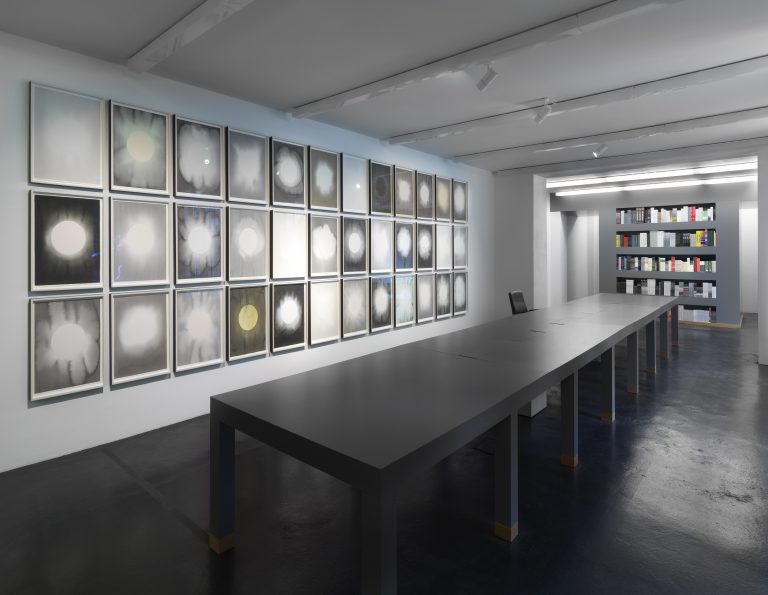
Olafur Eliasson, Unforgetting solar exposure, 2020, Indian ink, watercolour and pencil on paper, 36 parts, each 70,5 x 53 x 6 cm, overall: 221,5 x 691 cm, unique © Studio Olafur Eliasson. Courtesy the artist and neugerriemschneider, Berlin. Photo by Jens Ziehe
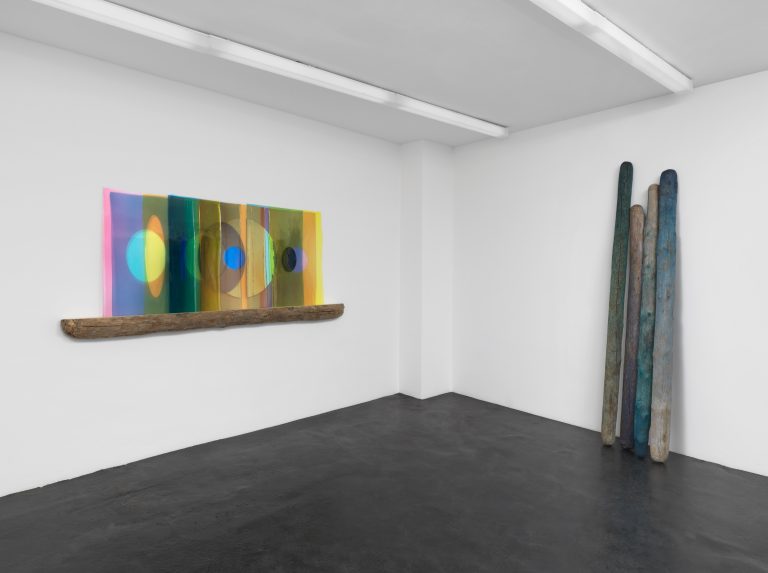
Olafur Eliasson, Collective sea flares, 2020. Coloured glass (cyan, pink, blue, blue fade, orange, yellow), silver, driftwood. 109,5 x 252 x 16 cm. Unique. © Studio Olafur Eliasson. Courtesy the artist and neugerriemschneider, Berlin. Photo by Jens Ziehe
Mirroring the coloration of the light works and their elliptical projections, Collective sea flares (2020) comprises ten layered panes of hand-blown glass positioned on a driftwood ledge. The glass pieces each vary in color, ranging from bright yellow to lush pink and deep blue, that overlap to create new tones. The effects produced by this layering create the impression of shifting colors, giving the simplified composition a sense of exceptional depth, movement and intricacy. Each of the delicate panes are punctuated by a circular or elliptical form on their surfaces, either as a cutout or a silvered adornment. The gaps created by the cutouts expose the true coloration of the glass that lies behind them, revealing the work’s illusory nature. The circular silvered coating acts as a mirror onto the work’s surroundings and the viewer, creating a space for reflection. Resting on a piece of driftwood sourced from the Icelandic shoreline, the composition’s base recalls Eliasson’s homeland—the natural phenomena and landscape of which have long inspired his work.
The watercolors that make up the 36-part Unforgetting solar exposure (2020) expand upon the circular forms and studies of light, color and natural phenomena central to the exhibition. Executed in muted tones, the work explores stark juxtapositions between negative and positive space. The voids in each painted composition are achieved by diluting pigments with water, making the areas that contain the least amount of paint seem most luminous. Situated at the images’ centers, the bright, circular, nearly bare patches are surrounded by heavily pigmented layers of watercolor. The matrix of elements that comprise Unforgetting solar exposure allows the work to unfold in a manner akin to Harold Edgerton’s rapatronic photographs of atomic explosions, while the contrasting density and sparseness of pigment evokes the built spaces and atmospheric gaps that characterize cities.
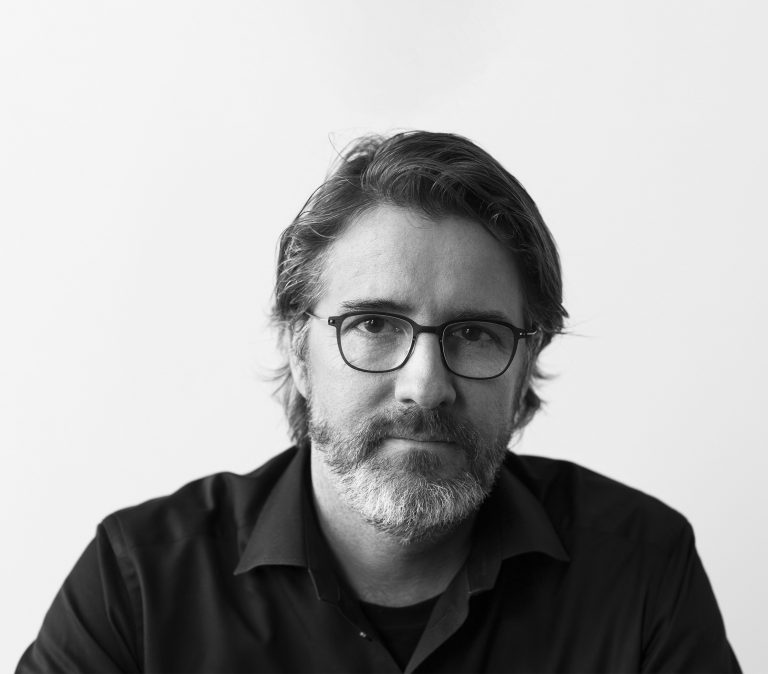
Portrait of Olafur Eliasson, © Olafur Eliasson. Photo: Brigitte Lacombe, 2016
Olafur Eliasson (b. 1967) is an artist driven by his interests in perception, movement and self-awareness and he seeks engagement with the viewer through participatory and sensory projects. Traversing sculpture, painting, photography, film, installation and architecture, his work has been presented by museums and institutions around the world. Not limited to the confines of the museum and gallery, his practice also engages the broader public sphere through architectural projects, interventions in civic space and social and political public projects.
Eliasson has been the subject of international institutional exhibitions, including recent shows at Museum of Contemporary Art Tokyo (2020); Kunsthaus Zürich (2020); Guggenheim Museum Bilbao (2020); Tate Modern, London (2019); Serralves Museum of Contemporary Art and Park, Porto (2019-20); Pinakothek der Moderne, Munich (2018); Red Brick Art Museum, Beijing (2018); Leeum, Samsung Museum of Art, Seoul (2016); Palace of Versailles, Paris (2016); Moderna Museet, Stockholm (2015); Gropius-Bau, Berlin (2010); Museum of Modern Art, New York (2008); and Tate Modern, London (2003). Olafur Eliasson was featured at the Gwangju Biennale in 2014 and the Danish Pavilion at the Venice Biennale in 2003. His public projects and architectural collaborations include those for the Harpa Reykjavik Concert Hall and Conference Centre, Reykjavik (2011); The New York City Waterfalls, Public Art Fund, New York (2008); and Serpentine Gallery Pavilion, London (2007).
In July 2020, Olafur Eliasson released his augmented reality app Earth Speakr on the occasion of the German Presidency of the Council of the European Union 2020. Available for download now, this app was created in collaboration with groups of creative partners, children, panels of researchers and his studio, and invites people of all ages to animate their environment using playful interactive technology, promoting unity and reflection on climate change and the future of the planet.
Isa Genzken
“Fragility can be a very beautiful thing, more beautiful than something that’s obviously made to last forever.”
Isa Genzken
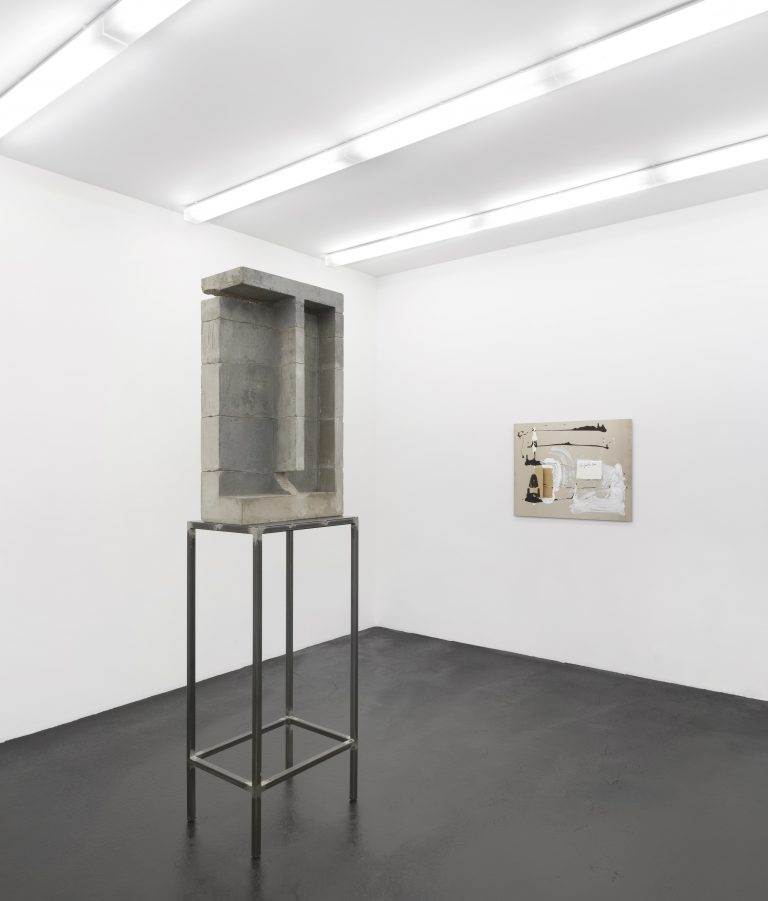
Isa Genzken, Stapelhaus 2, 1987. Concrete, paint, steel. 252 x 50 x 63,5 cm. © Isa Genzken / VG Bild-Kunst, Bonn. Courtesy the artist, neugerriemschneider, Berlin and Galerie Buchholz. Photo by Jens Ziehe
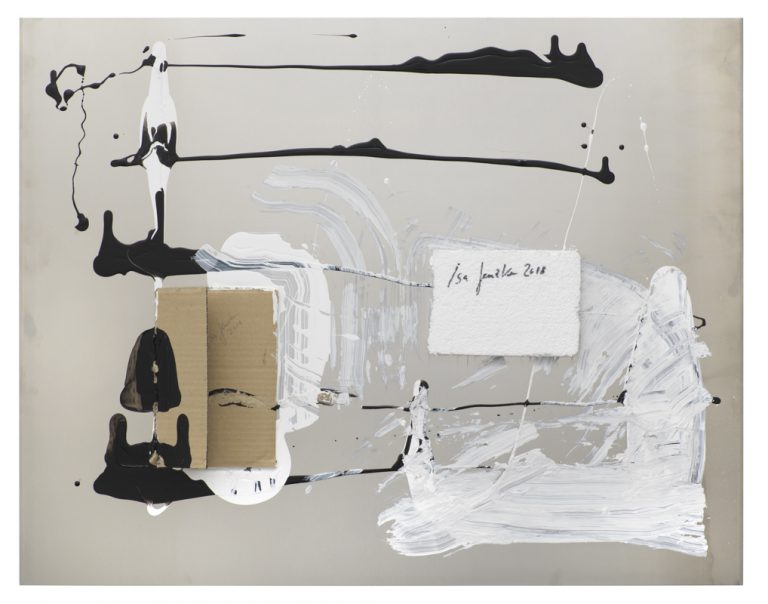
Isa Genzken, Untitled, 2018. Aluminium, lacquer, styrofoam, cardboard, permanent marker, pen. 80 x 100 cm. © Isa Genzken / VG Bild-Kunst, Bonn. Courtesy the artist, neugerriemschneider, Berlin and Galerie Buchholz. Photo by Jens Ziehe
neugerriemschneider is pleased to announce Isa Genzken’s fifth solo exhibition with the gallery. This show spans four decades, with early works from the 1980s to newer, never-before-shown work. It is an exploration of the artist’s ongoing engagement with architecture and the traditions of Modernism, Minimalism and concepts of authorship through sculpture, collage and photography.
Stapelhaus 2 (1987) is an austere form composed of cast concrete blocks stacked on one another and placed atop a sleek steel structure. This work is an integral part of Genzken’s extensive engagement with concrete forms and her interrogation of the principles of Minimalism. Named after Cologne’s Stapelhaus—a medieval warehouse that served as a symbol of the city’s economic prowess and was redesigned and reconstructed after the second World War—Stapelhaus 2’s vertical divisions and cantilevered horizontal elements lend the concrete composition the presence of an architectural model in delicate balance. Separating the concrete element’s layers are lengthwise splits that appear to be both organically occurring and precisely engineered. Their roughly hewn nature, along with the cracks and pores that texture the sculpture’s partially lacquered surfaces suggest a delicate quality that contrasts starkly with concrete’s structural properties. The sculpture’s simplified steel base elevates the stacked blocks to eye-level and brings notions of scale into question.
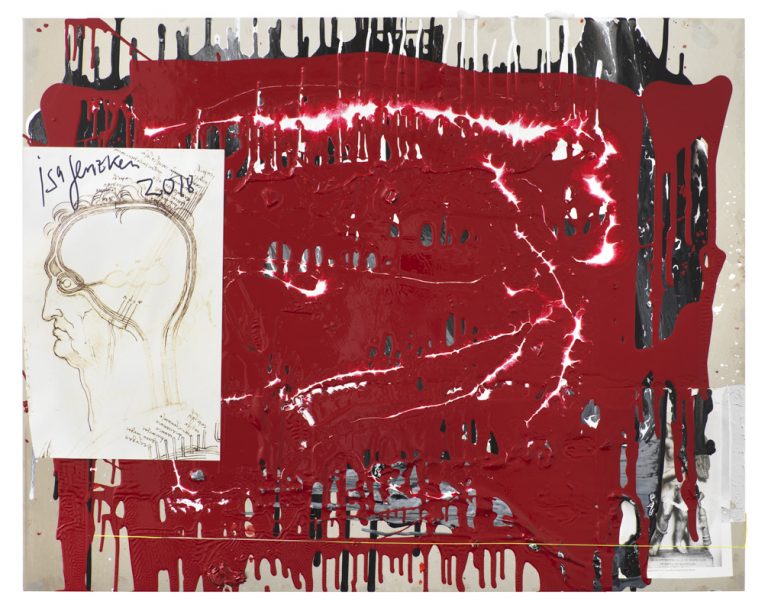
Isa Genzken, Untitled, 2018. Aluminum, lacquer, c-print, paper,adhesive tape, permanent marker. 81 x 102,5 cm. © Isa Genzken / VG Bild-Kunst, Bonn. Courtesy the artist, neugerriemschneider, Berlin and Galerie Buchholz. Photo by Jens Ziehe
Created over thirty years later, Genzken’s Untitled (2018) presented here continues her investigation of the interface between sculpture and architecture. Expanding upon the principle of layered construction established in Stapelhaus 2 and her extensive use of adhesive tape throughout her body of work, this untitled work consists of tape rolls stacked on a painted wooden platform. Opposing the geometrically measured nature of the concrete work, this sculpture’s ring-shaped building blocks are arranged precariously—stacked high, seemingly fallen or extending over the plinth’s edge. Forming a bustling metropolis’ skyline in miniature, the rolls of adhesive tape are color-coded, branded or adorned with a design, and all show varying levels of use. The sides of the pedestal feature photographic prints, mostly of the artist herself, affixed with tape.
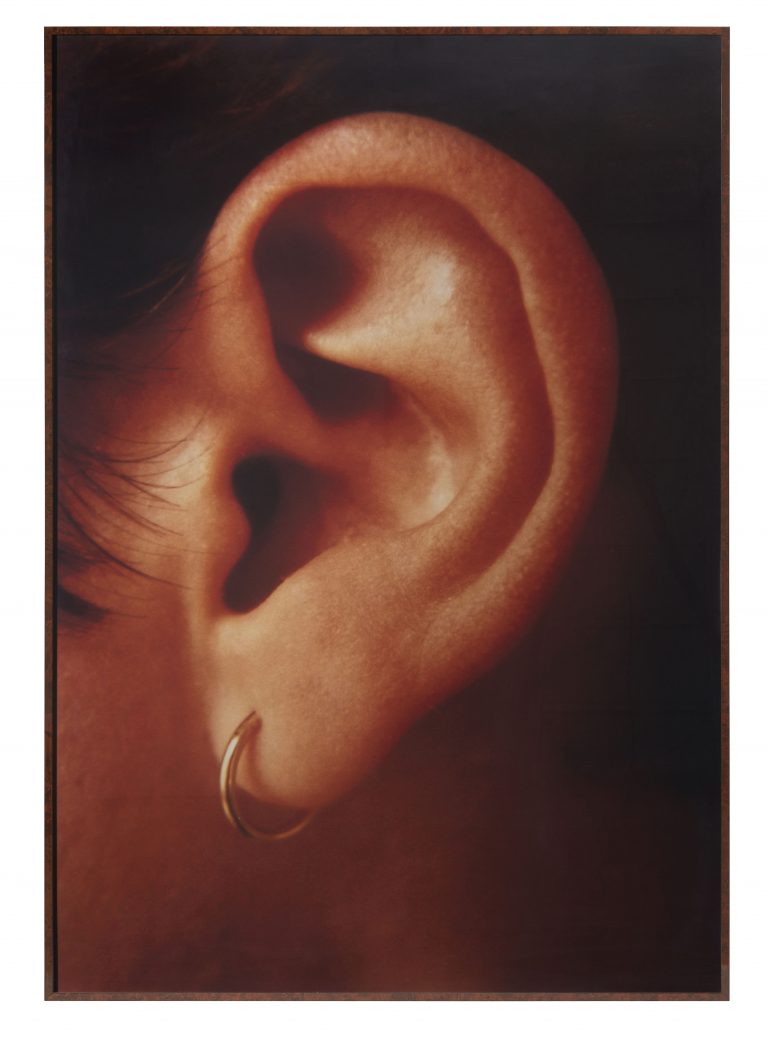
Isa Genzken, Ohr, 1980/2012. Chromogenic color print, framed.152 x 107 cm. © Isa Genzken / VG Bild-Kunst, Bonn. Courtesy the artist, neugerriemschneider, Berlin and Galerie Buchholz. Photo by Jens Ziehe
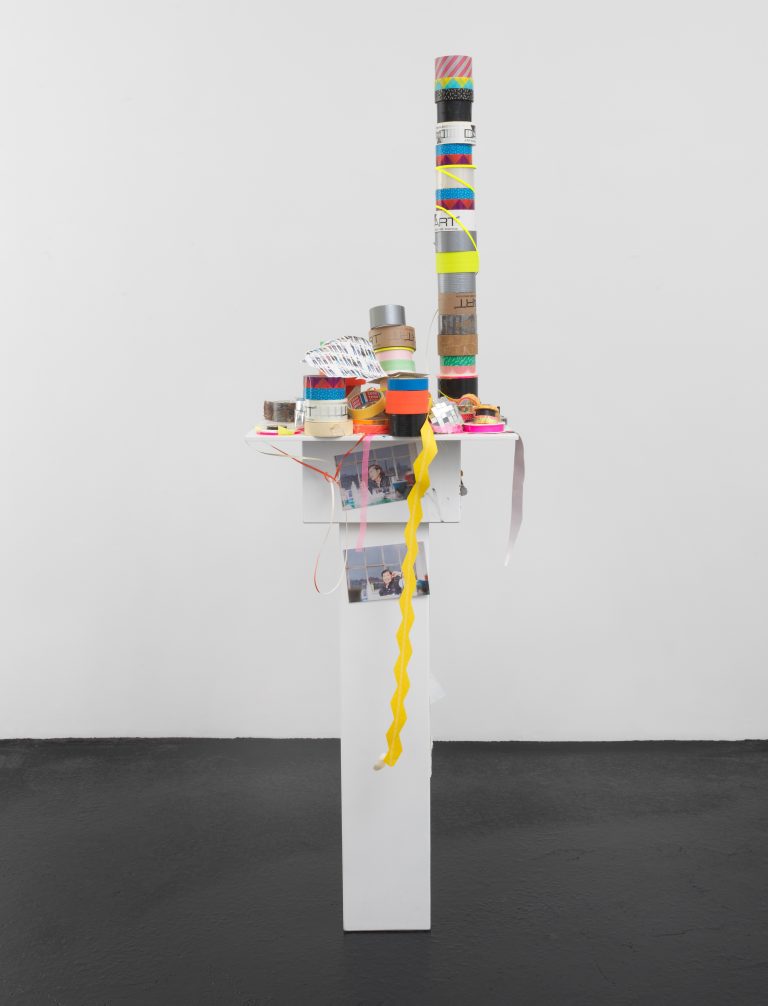
Isa Genzken, Untitled, 2018. Adhesive tapes, plastic, metal, paint, glue, mirror, textile, toy figures, photographs, color prints, postcards, paper, wood. 209 x 63,5 x 53 cm. © Isa Genzken / VG Bild-Kunst, Bonn. Courtesy the artist, neugerriemschneider, Berlin and Galerie Buchholz. Photo by Jens Ziehe
Similarly, the wall-mounted collage Untitled (2018) also foregrounds references to the body, perception and the senses. The work’s surface is dominated by swaths of red lacquer punctuated by white paint, on top of which Genzken applies a reproduced study of the human brain by Leonardo da Vinci. Below the painted composition is a photograph showing a copy of ancient Greek sculptor Lysippos’ Eros. The largely grey, white and black color palette of a second Untitled (2018) collage echoes the artist’s engagement with concrete forms, employing as its base the similarly industrial material of untreated aluminum that the artist has revisited throughout her oeuvre. Drips of paint give way to smudges, as rectangular fragments of polystyrene foam and cardboard give the work a three-dimensional quality. The prominent placement of the artist’s signature and the work’s date in both collages furthers the multifaceted navigation of authorship explored throughout the exhibition.

Isa Genzken, Atelier, Cologne, 1987 © Benjamin Katz / VG Bild-Kunst, Bonn
Isa Genzken (b. 1948) works in sculpture, installation, collage, photography, painting, drawing and time-based media, deploying materials and methodologies in inventive ways over the past forty years. From computer-designed abstract wooden sculptures to her early, architecturally derived concrete casts and later assemblages that often combine industrially produced materials with objects ranging from the everyday to the luxurious, Genzken references spheres both public and private while also drawing upon architecture, design, popular culture and consumer-oriented goods.
Coinciding with the presentation at neugerriemschneider, Kunstmuseum Basel will host the comprehensive survey exhibition Isa Genzken. Works 1973 to 1983 from September 5, 2020 to January 24, 2021. Genzken has been the subject of international institutional exhibitions, including those at Kunsthalle Bern (2019); Martin-Gropius-Bau, Berlin (2016); Institute of Contemporary Art, London (2015); Museum für Moderne Kunst, Frankfurt/Main (2015); Stedelijk Museum, Amsterdam (2015); Dallas Museum of Art, Dallas (2014); Museum of Contemporary Art, Chicago (2014); Museum of Modern Art, New York (2013); Museum Ludwig, Cologne (2009); Secession, Vienna (2006); Lenbachhaus, Munich (2004); Kunsthalle Zürich, Zurich (2003); Museum Abteiberg, Mönchengladbach (2002). Isa Genzken has been featured at the Venice Biennale in 1982, 1993, 2003, 2007 and 2015, and was selected for the German Pavilion in 2007. Her work has also been part of documenta (1982, 1992, 2002) and Skulptur Projekte Münster (1987, 1997, 2007). In 2017, Isa Genzken received the Goslarer Kaiserring.

